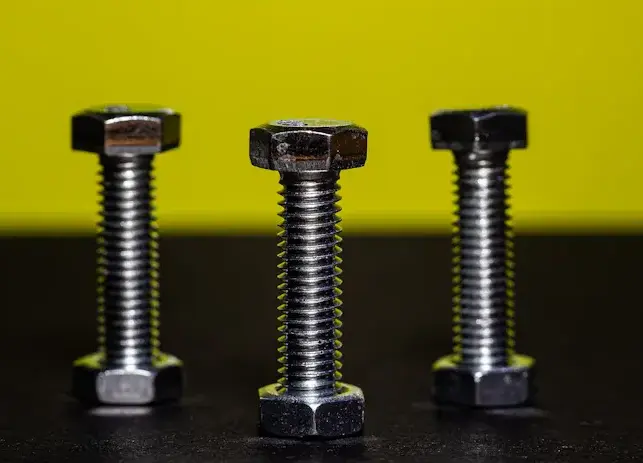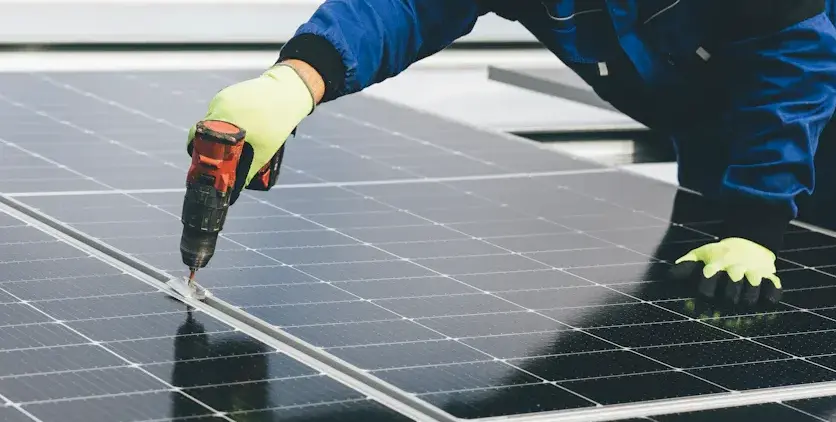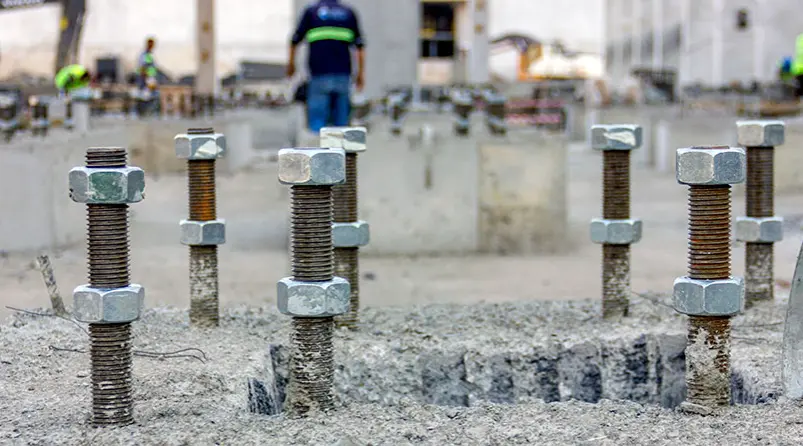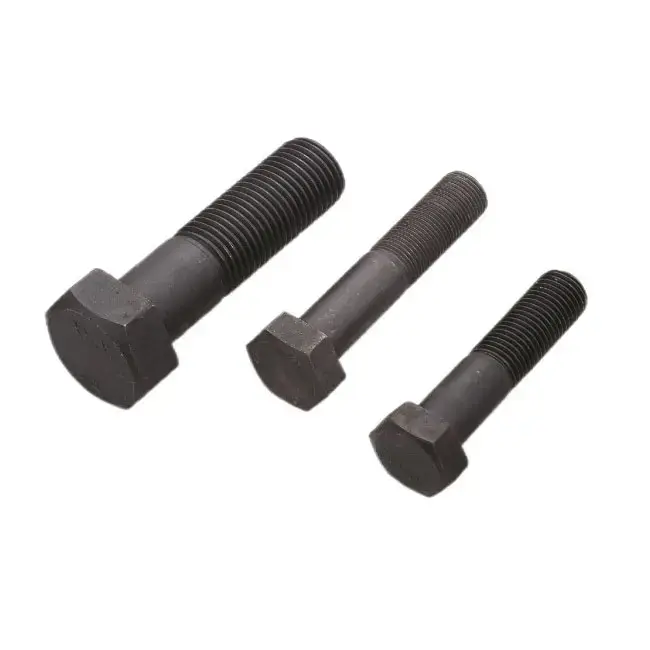What Are Eye Bolts? A Complete Guide for Industrial and DIY Use
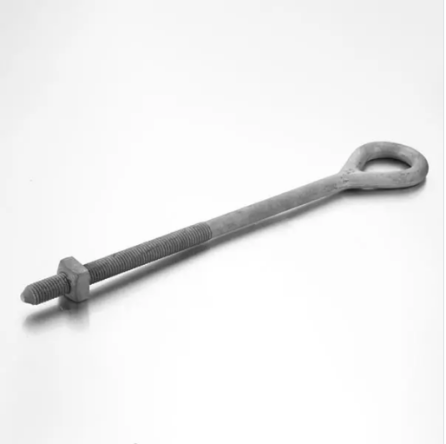
Eye bolts are versatile fasteners with a looped head, designed for lifting, securing, or anchoring loads. You’ll find them essential in industrial tasks like hoisting Heavy Equipment and in DIY projects requiring stability. Their strength and reliability make them a go-to choice for applications that demand safety and precision.
Key Takeaways
· Eye bolts are useful tools for lifting, holding, and securing things.
· Picking the correct eye bolt type, like standard, shoulder, or swivel, is important for safety and how well it works.
· Cleaning and checking eye bolts often helps them last longer and stay safe to use.
Types of Eye Bolts
Eye bolts come in various designs, each tailored to specific tasks. Understanding these types will help you choose the right one for your project.
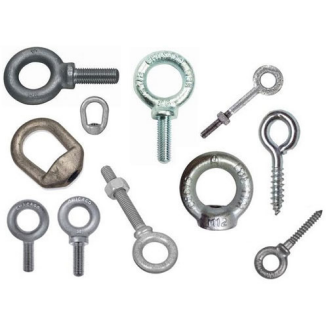
Standard Eye Bolts
Standard eye bolts are the most basic type. They feature a simple loop at the top and a threaded shank. You can use them for straightforward lifting or anchoring tasks. These bolts work best when the load is applied in a straight line. However, they are not ideal for angled pulls, as this can weaken the bolt or cause it to fail.
Tip: Always ensure the load aligns with the bolt's axis to maximize safety and performance.
Shoulder Eye Bolts
Shoulder eye bolts include a reinforced "shoulder" between the loop and the shank. This design allows them to handle angular loads more effectively than standard eye bolts. You might find these useful in situations where the load doesn't pull straight down. For example, they are often used in rigging or lifting applications where the angle of force varies.
Note: Even with shoulder eye bolts, you should avoid extreme angles to prevent unnecessary stress on the bolt.
Swivel Eye Bolts
Swivel eye bolts are designed for dynamic applications. Their loop can rotate 360 degrees, allowing the bolt to adjust to the direction of the load. This feature makes them perfect for tasks involving movement, such as securing loads that shift or rotate. You’ll often see these bolts in industries like shipping or construction, where flexibility is crucial.
Lag Eye Bolts
Lag eye bolts are unique because they don’t have a threaded shank. Instead, they feature a screw-like tip designed to be driven into wood or other soft materials. These bolts are ideal for lighter loads in DIY projects, such as hanging plants, securing cables, or creating anchor points in wooden structures.
Tip: Pre-drill a pilot hole before installing a lag eye bolt to prevent the wood from splitting.
Machinery Eye Bolts
Machinery eye bolts are heavy-duty fasteners designed for industrial use. They often include a precision-machined thread and a larger loop to accommodate lifting equipment. You’ll find these bolts in applications like hoisting machinery, engines, or other heavy equipment. Their robust construction ensures they can handle significant weight without compromising safety.
Note: Always check the load rating of machinery eye bolts before use to ensure they meet your requirements.
Materials Used in Eye Bolts
The material of an eye bolt plays a crucial role in its performance and durability. Choosing the right material ensures safety and longevity for your project.
Stainless Steel
Stainless steel eye bolts resist rust and corrosion, making them ideal for outdoor or marine environments. You can use them in areas exposed to moisture, such as docks or boats. They also maintain their strength in extreme temperatures.
Tip: If you need eye bolts for long-term outdoor use, stainless steel is your best option.
Carbon Steel
Carbon steel eye bolts are strong and cost-effective. They work well for heavy-duty applications in controlled environments. You’ll often find them in construction or machinery settings. However, they are prone to rust if exposed to moisture.
Note: Use carbon steel eye bolts indoors or in dry conditions to prevent corrosion.
Galvanized Steel
Galvanized steel eye bolts have a protective zinc coating that resists rust. This makes them suitable for outdoor use, especially in humid or rainy climates. They offer a balance between strength and corrosion resistance.
Tip: Choose galvanized steel when you need durability at a lower cost than stainless steel.
Specialty Materials
Some eye bolts are made from specialty materials like titanium or brass. These materials serve specific purposes. For example, titanium offers high strength and corrosion resistance, while brass resists tarnishing and works well in decorative applications.
Did You Know? Specialty materials are often used in industries like aerospace or for custom projects requiring unique properties.
Application of Eye Bolts
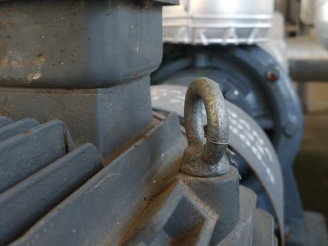
Industrial Uses
Eye bolts play a vital role in industrial settings. You can use them to lift heavy machinery, secure loads during transportation, or anchor equipment. Their strength and reliability make them essential in construction, manufacturing, and warehousing. For example, machinery eye bolts are commonly used to hoist engines or other large components safely. Swivel eye bolts are another popular choice in industries where loads need to move or rotate during lifting.
Tip: Always check the load capacity of the eye bolt before using it in industrial applications to ensure safety.
DIY and Home Projects
Eye bolts are equally useful for DIY enthusiasts and homeowners. You can use them to hang decorations, secure outdoor furniture, or create anchor points for swings and hammocks. Lag eye bolts are particularly handy for these tasks since they can be screwed directly into wood. Whether you’re organizing your garage or setting up a backyard project, eye bolts provide a simple yet effective solution.
Did You Know? Pre-drilling holes for lag eye bolts can make installation easier and prevent damage to the material.
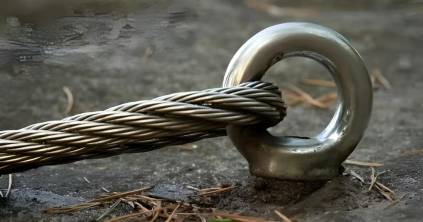
Marine and Outdoor Applications
In marine environments, eye bolts are indispensable. Stainless steel eye bolts resist rust and corrosion, making them perfect for securing boats, docks, or fishing equipment. You can also use them in outdoor settings to anchor tents, secure tarps, or hang outdoor lighting. Galvanized steel eye bolts are a cost-effective option for outdoor projects where moisture exposure is moderate.
Note: For long-term outdoor use, choose materials like stainless steel to ensure durability.
Selecting the Right Eye Bolts
Choosing the right eye bolts for your project is essential for safety and efficiency. By considering factors like load capacity, environmental conditions, thread type, and specific use cases, you can ensure the best performance for your application.
Load Capacity and Weight Ratings
The load capacity of an eye bolt determines how much weight it can safely handle. Always check the manufacturer's weight rating before use. Overloading an eye bolt can lead to failure, which may cause accidents or damage.
To select the right eye bolt:
1. Identify the maximum weight of the load.
2. Choose an eye bolt with a weight rating higher than the load.
3. Consider dynamic forces if the load will move or shift.
Tip: For industrial applications, use machinery eye bolts with precise weight ratings to ensure safety.
Environmental Factors
The environment where you use eye bolts affects their durability. Moisture, temperature, and exposure to chemicals can weaken certain materials. Stainless steel works well in wet or marine environments because it resists rust. Galvanized steel offers a cost-effective option for outdoor use in moderate conditions.
If you’re working in extreme environments:
· Use stainless steel for long-term exposure to water or salt.
· Avoid carbon steel in humid areas to prevent rust.
· Consider specialty materials like titanium for high-corrosion or high-temperature settings.
Note: Matching the material to the environment extends the lifespan of your eye bolts.
Thread Type and Size
Thread type and size impact how securely the eye bolt fits into its anchor point. Eye bolts come with different thread patterns, such as coarse or fine threads. Coarse threads are easier to install and work well in softer materials like wood. Fine threads provide a tighter fit and are better for metal applications.
To choose the correct thread size:
· Measure the diameter of the hole or anchor point.
· Match the thread type to the material you’re working with.
· Ensure the shank length is sufficient for a secure hold.
Tip: For wooden surfaces, pre-drill a hole to prevent splitting when installing lag eye bolts.
Specific Use Cases
Different projects require specific types of eye bolts. For lifting heavy machinery, machinery eye bolts provide the strength and precision needed. Swivel eye bolts are ideal for loads that move or rotate. For DIY projects, lag eye bolts offer a simple solution for anchoring into wood.
Here are some examples:
· Industrial Use: Hoisting engines or securing equipment.
· DIY Projects: Hanging plants, swings, or decorations.
· Marine Applications: Securing boats or fishing gear.
Did You Know? Using the wrong type of eye bolt for a specific task can compromise safety and performance.
Safety Guidelines for Eye Bolts
Installation Best Practices
Proper installation ensures the safe and effective use of eye bolts. Always start by selecting the correct type of eye bolt for your task. Ensure the surface or material where you install the bolt is strong enough to handle the load. For threaded eye bolts, tighten them securely into the anchor point. Use a wrench to achieve a snug fit, but avoid over-tightening, which can damage the threads. If you’re working with lag eye bolts, pre-drill a pilot hole to prevent splitting the material.
Tip: Align the eye bolt with the direction of the load to reduce stress and prevent failure.
Inspection and Maintenance
Regular inspection keeps eye bolts in good working condition. Before each use, check for signs of wear, such as cracks, rust, or deformation. Replace damaged bolts immediately to avoid accidents. Clean the bolts periodically to remove dirt and debris. For bolts exposed to moisture, apply a protective coating or lubricant to prevent corrosion.
Note: Frequent maintenance extends the lifespan of your eye bolts and ensures safety.
Avoiding Common Mistakes
Using eye bolts incorrectly can lead to accidents. Avoid exceeding the load capacity specified by the manufacturer. Never use a standard eye bolt for angular loads unless it has a shoulder design. Do not modify or weld eye bolts, as this weakens their structure.
Warning: Misusing eye bolts can result in serious safety hazards.
Load Testing and Certification
Load testing verifies the strength and reliability of eye bolts. You should test bolts used in critical applications, such as lifting heavy machinery. Certified eye bolts come with documentation that guarantees their load capacity. Always choose certified products for industrial tasks to ensure compliance with safety standards.
Did You Know? Certified eye bolts undergo rigorous testing to meet industry regulations.
Maintenance of Eye Bolts
Proper maintenance of eye bolts ensures their longevity and safe performance. By following a few simple steps, you can keep your eye bolts in excellent condition for years to come.
Cleaning and Lubrication
Regular cleaning removes dirt, grease, and other debris that can weaken eye bolts over time. Use a soft brush or cloth to wipe away surface grime. For stubborn buildup, soak the bolts in warm, soapy water and scrub gently. After cleaning, dry them thoroughly to prevent moisture from causing rust.
Lubrication is equally important, especially for bolts exposed to friction or movement. Apply a light coat of machine oil or a silicone-based lubricant to the threads and loop. This reduces wear and makes installation and removal easier.
Tip: Avoid over-lubricating, as excess oil can attract dust and dirt.
Preventing Corrosion
Corrosion weakens eye bolts and compromises their safety. To prevent this, choose materials like stainless steel or galvanized steel for outdoor or humid environments. For additional protection, apply a rust-resistant coating or spray to the bolts.
If you notice early signs of rust, remove it immediately using a wire brush or rust remover. Regular inspections help you catch corrosion before it becomes a serious issue.
Note: Store eye bolts in a dry area to minimize exposure to moisture.
Proper Storage
Storing eye bolts correctly prevents damage and ensures they’re ready for use when needed. Keep them in a clean, dry location, away from moisture and chemicals. Use labeled containers or bins to organize bolts by size and type. This makes it easier to find the right bolt for your project.
Did You Know? Proper storage not only extends the life of your eye bolts but also saves you time during future projects.
Eye bolts are essential tools for lifting, securing, and anchoring in both industrial and DIY projects. Choosing the right type and material ensures safety and efficiency. Regular maintenance, like cleaning and inspecting, extends their lifespan. By following these tips, you can maximize the reliability and performance of your eye bolts.
FAQ
What is the difference between standard and shoulder eye bolts?
Standard eye bolts work for straight-line loads. Shoulder eye bolts handle angular loads better due to their reinforced design. Use shoulder eye bolts for tasks involving angled force.
Tip: Always check the load direction before choosing between these two types.
Can you use eye bolts outdoors?
Yes, you can. Choose stainless steel or galvanized steel eye bolts for outdoor use. These materials resist rust and corrosion, ensuring durability in wet or humid environments.
How do you prevent eye bolts from loosening?
Tighten the bolt securely using a wrench. For added security, use thread-locking compounds or lock washers. Regularly inspect the bolt to ensure it remains firmly in place.
Note: Avoid over-tightening, as it can damage the threads or the material.


